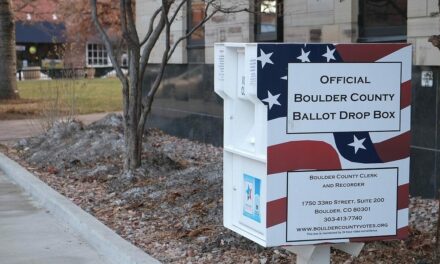We support our Publishers and Content Creators. You can view this story on their website by CLICKING HERE.
Here is our president today:
Well, obviously Trump should be “proud” of the Tax Cuts and Jobs Act, which is set to expire at the end of 2025. If the GOP presidential candidate had any sense, he would be running Biden’s promise to enact a $2 trillion tax hike, one of the biggest in American history, in a perpetual ad loop.
Of course the rich benefited. As did everyone else. Even the New York Times and Washington Post were compelled to admit as much.
In raw terms, as with any across-the-board tax cut, Trump’s reform helped higher earners most, because high earners pay most of our federal taxes. In 2023, the top 1 percent paid eight times the rate paid by the bottom half of taxpayers. The idea that the rich aren’t paying their share is a preposterous zero-sum economic myth spread by resentment-racket class warriors on left and right. If everyone actually paid his “fair share” in this country, we’d be years deep into a violent revolution.
If anything, the problem with Trump’s tax cuts was that the code became more progressive, although other downsides include the lack of any corresponding cuts or reforms of debt-driving entitlements. Quite the opposite.
As a percentage of income, though, the Trump tax cuts benefited the middle class most, as Justin Haskins explained:
A careful analysis of the IRS tax data, one that includes the effects of tax credits and other reforms to the tax code, shows that filers with an adjusted gross income (AGI) of $15,000 to $50,000 enjoyed an average tax cut of 16 percent to 26 percent in 2018, the first year Republicans’ Tax Cuts and Jobs Act went into effect and the most recent year for which data is available.
Filers who earned $50,000 to $100,000 received a tax break of about 15 percent to 17 percent, and those earning $100,000 to $500,000 in adjusted gross income saw their personal income taxes cut by around 11 percent to 13 percent.
By comparison, no income group with an AGI of at least $500,000 received an average tax cut exceeding 9 percent, and the average tax cut for brackets starting at $1 million was less than 6 percent. (For more detailed data, see my table published here.)
That means most middle-income and working-class earners enjoyed a tax cut that was at least double the size of tax cuts received by households earning $1 million or more.
Let’s not forget, as well, when “that tax cut is going to expire”—and there are no assurances anything would pass to take its place—that would slash child tax credits from $2,000 per child to $1,000 and cut additional credits for older children and dependents in half. It should also be remembered that corporate taxes—which Trump cut from 35 percent to 21 percent and Democrats raised again—are also just a tax on consumers.
You may also recall the fearmongering and performative meltdowns among Democrats over the tax reform. Larry Summers, a relatively moderate voice on the left, warned Trump’s bill was “a threat to democracy” and would lead to more than 10,000 dead Americans every year.
“Armageddon,” House Minority Leader Nancy Pelosi warned, declaring Trump’s tax cut “one of the worst bills in the history of the United States Congress”— potentially, then, in a category with the Fugitive Slave Act and the Espionage Act. Unhinged progressive economist Bruce Bartlett said on MSNBC the tax cuts were “really akin to rape” of the poor, while the Washington Post ran an article from a “depression historian” who contended, “The GOP tax bill is straight out of 1929.”
What happened? The bill passed at the end of 2017. In 2018, the real GDP increased 3.1 percent, compared with an increase of 2.5 percent the previous year. The price index for GDP purchases increased 2.1 percent in 2018, compared to 1.9 percent in 2017.
Many “new right” populists don’t like defending tax cuts (Ronald Reagan talked about them a lot, so yuck). But the average American family — which is middle class, lives in the suburbs, and votes in high numbers — will surely be more concerned about a rising tax bill than about any issue animating the populist Internet influencer crowd.

 Conservative
Conservative  Search
Search Trending
Trending Current News
Current News 





